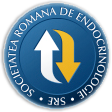
- Login
- Register
- Home/Current Issue
- About the journal
- Editorial board
- Online submission
- Instructions for authors
- Subscriptions
- Foundation Acta Endocrinologica
- Archive
- Contact
 Romanian Academy
Romanian Academy
 The Publishing House of the Romanian Academy
The Publishing House of the Romanian Academy

ACTA ENDOCRINOLOGICA (BUC)
The International Journal of Romanian Society of Endocrinology / Registered in 1938in Web of Science Master Journal List
Acta Endocrinologica(Bucharest) is live in PubMed Central
Journal Impact Factor - click here.

-
Endocrine Care
Balci G, Bahcecioglu AB, Avci Merdin F, Erdogan MF
A Stepwise Approach to Localization Studies in Primary HyperparathyroidismActa Endo (Buc) 2024 20(3): 311-317 doi: 10.4183/aeb.2024.311
AbstractAbstract Purpose. Primary hyperparathyroidism (PHP) is a prevalent endocrine disorder requiring surgical treatment. The rise of minimally invasive parathyroidectomy as the favored surgical approach emphasizes the significance of localization studies. This study aims to explore clinical and laboratory profiles of PHP patients and evaluate the efficacy of diverse localization methods in a substantial patient cohort. Methods. We analyzed clinical features, biochemical parameters, and imaging outcomes for localization, as well as postoperative histopathological findings in 327 diagnosed PHP patients who underwent surgery. Initial localization methods, which included ultrasonography (US), US-guided Parathormone (PTH) washout analysis, and 99mTechnetium- Sestamibi/123Iodine Scintigraphy (MIBI-SPECT/CT), were applied to all patients. Advanced techniques like Four-Dimensional Computed Tomography (4D-CT) and 18F-Fluorocholine Positron Emission Tomography (18F-FCH PET/CT) were used for cases where initial methods failed and/ or for secondary intervention. Results. Minimally invasive surgery accounted for 74% (n=241) of cases. Histopathological analysis revealed single adenoma in 94.5% (n=309) patients, hyperplasia in 5.2% (n=17), and cancer in 0.3% (n=1). Adenoma volume showed a significant positive correlation with serum calcium and parathyroid hormone (PTH) levels (p<0.001). 82 and 26 cases required 4D-CT and 18F-FCH PET/CT respectively, for localization. Positive predictive values (PPV) for imaging modalities were: US (84.56%), US-guided PTHwashout analysis (87.30%), MIBI-SPECT/CT (92.1%), 4DCT (81.94%), and 18F-FCH PET/CT (95.83%). Conclusion. Serum calcium and PTH levels estimate adenoma size. Initial localization studies (i.e.US, PTH washout and, MIBI-SPECT/CT) effectively localized most adenomas. 4D-CT showed notable efficacy, and 18F-FCH PET/CT had the highest PPV for adenoma localization when the initial studies failed. -
Endocrine Care
Ozenoglu A, Ugurlu S, Balci H, Can G, Hatemi H
The effect of a fiber rich dietary product used for the dietary treatment of adult obese women on some biochemical parameters and anthropometric measurementsActa Endo (Buc) 2007 3(3): 315-322 doi: 10.4183/aeb.2007.315
AbstractThis study was performed to search the effect of a fiber rich dietary product on anthropometric measurements and some biochemical parameters of obese adult women. A total of 25 adult women (12 were in study and 13 were in control group, all randomly selected) volunteered in this study. At the beginning of the study, height, weight, waist and hip circumferences of all women were measured, and blood samples were collected for fasting blood glucose (FBG), insulin, triglycerides (TG), total cholesterol, HDL-C, LDL-C, VLDL-C levels. Patients having endocrine and metabolic disturbances and who need to use anti-obesity medications were not enrolled. A low calorie weight losing diet consisting of 50-55% carbohydrate, 15-20% protein and <30% fat was given to all cases, but women in the study group were given a specific dietary product rich in apple and wheat fiber as an exchange of one slice of bread every day. Patients were checked monthly with respect to their weight loss and diet adhesion during the three months of treatment period. Although biochemical parameters did not show any significant differences between the two groups at the beginning of the study, FBG and insulin levels were significantly lower in the study group than in the control group at the end of the treatment period. There were also significant decreases in insulin, triglyceride, total cholesterol and VLDL-C levels in the study group after 3 months of treatment, but not in the control group. Women in both groups lost weight, and their waist and hip circumferences decreased significantly. This concludes that the fiber rich, fat, sugar and salt free dietary product could be a useful dietary treatment not only in obesity, but also in dislipidemia and insulin resistant states. -
Endocrine Care
Yilmaz G, Akkaya SK, Kaya MI, Balci T, Denizli R, Moraloglu Tekin O, Akkaya H, Ozgu-Erdinc AS
Investigation of Adherence to Postpartum Diabetes Screening Recommendations for Patients with Gestational Diabetes, in Turkey; a Cross-Sectional StudyActa Endo (Buc) 2024 20(3): 334-340 doi: 10.4183/aeb.2024.334
AbstractContext. The first study delves into the postpartum diabetes screening during the postpartum 3rd month period and exploration of non-compliance reasons. Objective. The primary aim of this study is to examine the adherence to postpartum diabetes screening recommendations among women with gestational diabetes in Turkey. Design. A cross-sectional study was conducted on 783 postpartum women diagnosed with gestational diabetes. Materials and Methods. Participants were categorized into three groups based on their screening behavior. Group 1 did not undergo any postpartum screening, Group 2 only underwent fasting plasma glucose (FPG) or HbA1c tests, and Group 3 only underwent oral glucose tolerance tests (OGTT). Data on demographic characteristics and reasons for non-compliance were collected. Results. Only 3.45% of women complied while 55.81% did not undergo any screening. Adherence was significantly higher among primigravid women. Statistically significant differences were observed based on education level, GDM treatment method, and information received during pregnancy or postpartum (p<0.001). The most common reason for non-compliance was normal FPG values observed post-delivery. Conclusion. This study emphasizes the crucial need for enhanced education and information provision to high-risk women diagnosed with gestational diabetes, both during pregnancy and the postpartum period, particularly during their hospital stay. -
Case Report
Karakilic-Ozturan E, Ozturk AP, Oney K, Kardelen Al AD, Yildirim ZY, Balci HI., Poyrazoglu S, Bas F, Darendeliler F
SLC34A3 Gene Mutation as a Rare Cause of Hypophosphatemia in Two SiblingsActa Endo (Buc) 2022 18(3): 387-391 doi: 10.4183/aeb.2022.387
AbstractContext. Hereditary hypophosphatemic rickets with hypercalciuria (HHRH) is a rare autosomal recessive disorder, which is characterized by renal phosphate wasting, hypercalciuria, increased 1,25-dihydroxyvitamin D, and decreased parathormone (PTH) levels. Objective. Here we report different clinical features of two siblings with HHRH, confirmed with molecular diagnosis. Subjects and methods. 16.4 years old boy (P1), and 8.7 years old girl (P2) were referred to our outpatient clinic due to clinical suspicion of metabolic bone diseases. Results. P1 had severe hypophosphatemia. Additionally, PTH concentration was near to the lower limit, 1,25-dihydroxyvitamin-D concentration was near to the upper limit. P2 had relatively milder clinical and laboratory findings. Bilateral renal calculi were detected on ultrasound in both of them. HHRH was suspected due to their described biochemistry and the presence of bilateral renal calculi. Molecular analysis of SLC34A3 gene revealed a homozygous variant c.756G>A (p.Gln252=) and a splice donor variant c.1335+2T>A. After oral phosphate treatment, clinical and biochemical improvements were observed. However treatment nonadherence of patients was a barrier to reach treatment goal Conclusion. The clinical phenotype due to the same mutation in the SLC34A3 gene may vary even among the members of the same family. An accurate diagnosis is important for the appropriate treatment. -
Endocrine Care
Yilmaz N, Tazegul G, Sari R, Avsar E, Altunbas H, Balci MK
Effectiveness of Unilateral Adrenalectomy in Bilateral Adrenal Incidentaloma Patients with Subclinical HypercortisolemiaActa Endo (Buc) 2021 17(4): 479-485 doi: 10.4183/aeb.2021.479
AbstractObjective. Unilateral adrenalectomy (UA) is an alternative for treatment in bilateral adrenal incidentaloma (AI) to avoid possible long-term risks of bilateral adrenalectomy. In this study, we aimed to evaluate the effectiveness of UA in bilateral AI patients with subclinical hypercortisolemia (SH). Method. A total of 35 patients were included in this study. The patients were divided into two groups; those who underwent UA (n=27) and patients without adrenalectomy (PWA) (n=8). Hormone tests related to cortisol mechanism were reviewed to analyze results at the time of diagnosis compared to the latest available results to figure out any changes in cortisol mechanism and determine whether SH has recovered or not. Results. Median age of PWA group were higher compared to UA group (p=0.03). Median duration of followup in groups were similar (p=0.3). In the PWA group, none of the patients recovered from hypercortisolemia during their follow-up. In UA group 92.6% of the patients went into remission, whereas during follow-up 3.3% had recurred and another 3.3% were found to have post-adrenalectomy persistent SH. Patients in UA group had lower final cortisol level following dexamethasone suppression (p=0.003) and higher final adrenocorticotrophic hormone (ACTH) levels (p=0.001) than patients in PWA group. In UA group, final basal cortisol level (p=0.009) and final cortisol level after 1 mg dexamethasone suppression test (DST) (p=0.004) were lower than corresponding levels at the time of diagnosis. Discussion. Our study demonstrates unilateral adrenalectomy targeting the side with the larger lesion is an effective approach to reduce excess cortisol levels in bilateral AI patients with SH.